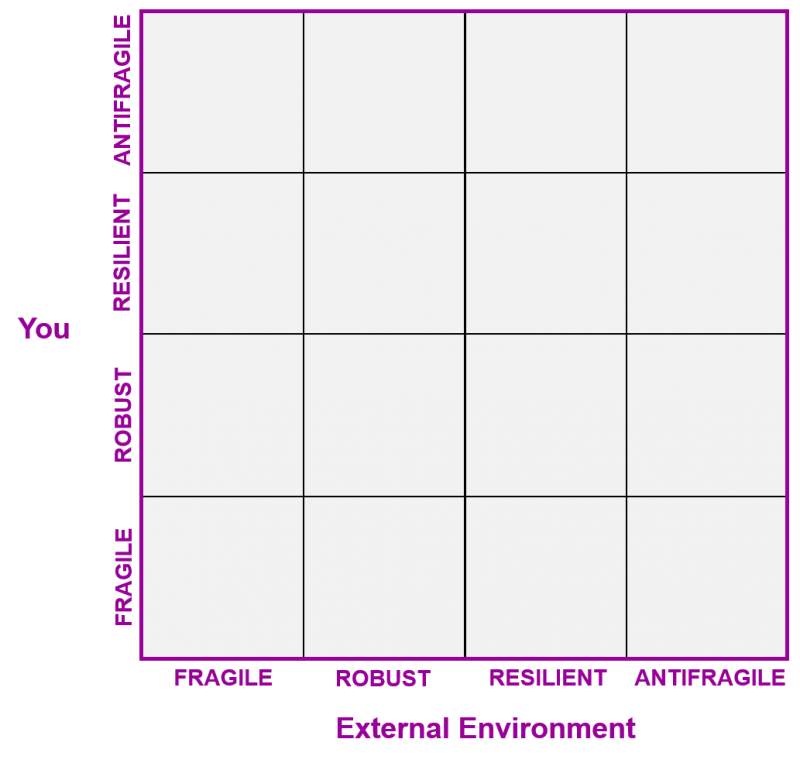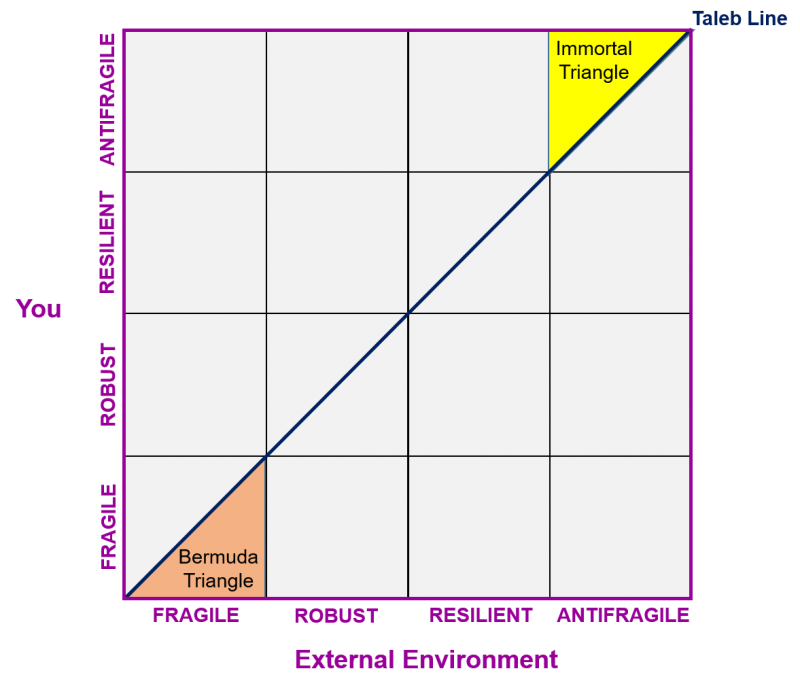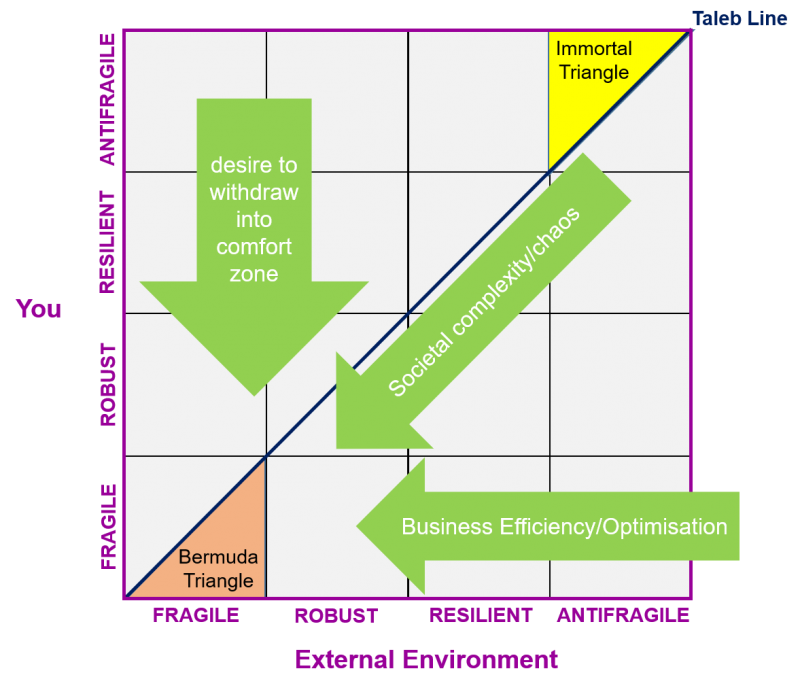As we come to the end of the Everythink book project, I’ve been allowing my brain to drift into the next one. Which is currently looking like it will be the first of the antifragility series. To that end we’ve been playing around with ways to assess a person’s level of antifragility. In doing that, we’ve realised that its helpful if we can also measure the antifragility (or fragility) of the environment in which the individual exists. Their workplace, for example, or home and family. This second question has proven to be a tad more difficult to solve. I think we’re somewhere close. Close enough to think about how to present the data once we’ve calculated it.
In a blinding flash of the ‘someone, somewhere already solved your problem’ obvious, it seemed that making a fragility version of the Complexity Landscape Model (CLM) would at least offer a decent start point. Here’s what it currently looks like:

In keeping with the CLM story, we first needed to identify distinctly different levels of fragility. Distinctly different meaning a discontinuous (s-curve) jump between one level and the next. We ended up with three jumps and therefore four levels:
Fragile – the individual or environment is unable to survive any out-of-the-ordinary perturbation (i.e. most enterprises on the planet at this point in time)
Robust – the individual or environment has inbuilt safety margins that enable survival of a defined set of extreme perturbations. If these extremes are exceeded, failure will be ‘brittle’ – i.e. sudden, extreme and irrecoverable. Like glass.
Resilient – the individual or environment has inbuilt safety margins, but this time, if these margins are exceeded, failure mechanisms work slowly, such that any failure will be benign (‘fail-safe’), and such that there is a high likelihood of recovery. Like willow.
Antifragile – the individual or environment becomes stronger as a result of the stresses and other negative effects imposed upon them. Like the human body.
Next up, also aligned with the CLM, there are ‘good’ and ‘bad’ places to be when we map our individual and environment fragility levels. First up, it is a very good idea for the individual to have a higher level of antifragility than their surrounding environment. I.e. they should be above the Taleb Line. The overall best place to be, then, is in the ‘Immortal Triangle’ up on the top right hand corner of the Landscape:

This is pretty much the opposite corner to the one in which most people currently find themselves. Down on the bottom left is the ‘Bermuda Triangle’. Most people are here right now because that’s where their environment is. And, worse, likely as not, that environment is less fragile than they are. Especially, for example, if you happen to be a person one any kind of zero-hours work contract. Here’s an extreme example of what most employers tend to want from their employees: a slight underpinning tension that let’s you know they’re in control, and you’re not. This unpleasant situation not helped by the natural desire for all of us to stay inside our comfort zones. What we end up with then are three big forces all working to (unwittingly) make us highly fragile:

It’s a long way from the Bermuda to the Immortal Triangle, but that’s the journey we all need to think about making in the coming months and years. Welcome to the Pleasure Dome.
